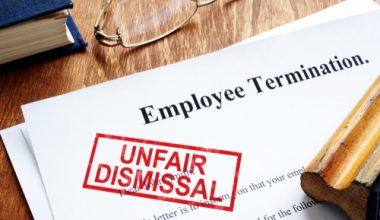Shipping damage can prove frustrating and costly for businesses and customers alike. It can result in damaged products, delivery delays, and customer dissatisfaction. However, certain steps can be taken to thwart shipping damage and ensure that products arrive in good condition and without any issues.
Understanding Shipping Damage
Shipping damage is a common problem that can occur while transporting goods. Comprehending the causes of shipping damage is essential to preventing its occurrence.
Several reasons can lead to shipping damage, including inadequate packaging, rough handling, and environmental factors. Employing superior packaging techniques is necessary to prevent items from shifting or breaking during transit. Rough handling can lead to items being dropped or bumped, causing damage.
Environmental factors, such as temperature and humidity, can also affect the condition of goods during transit. It is crucial to acknowledge that shipping damage can occur during transportation, including loading and unloading, transit, and storage. Thus, taking proactive measures becomes crucial to minimizing the risk of damage.
To prevent shipping damage, utilizing high-quality packaging materials capable of enduring the rigors of transportation is vital. The packaging must be suitable for the shipped item and provide adequate protection. Utilizing cushioning materials like bubble wrap or foam can help absorb shocks and prevent items from shifting during transit.
Additionally, labeling packages as “fragile” or “handle with care” can alert handlers to exercise extra caution when dealing with the package. Implementing proper handling techniques, such as using dollies or carts to move heavy items, can also help prevent damage.
In summary, gaining an understanding of the causes of shipping damage and taking proactive measures can greatly reduce the likelihood of damage during the transportation of goods.
Tips for Preventing Shipping Damage
Secure Packaging
Proper packaging is an essential measure to prevent shipping damage. The package must possess the sturdiness to endure the rigors of shipping and handling. It is advisable to use double-walled corrugated boxes and fill any empty spaces with cushioning materials like bubble wrap, packing peanuts, or foam. These cushioning materials should encase the product, preventing any movement during transit. Labeling the package as “fragile” or “handle with care” holds importance in alerting handlers to exercise additional precautions.
Select a Trustworthy Fuilfillment Provider
Selecting a trustworthy fulfillment company stands as a crucial step in averting shipping mishaps. These firms possess well-established systems and procedures to delicately manage your goods, guaranteeing that they package and secure them for transit correctly.
They frequently enlist seasoned staff who grasp the subtleties of secure handling and shipping. Furthermore, esteemed fulfillment companies invest in quality control methods, including rigorous inspections and advanced tracking technology, to curtail damage risks during transportation. If you place your shipping needs in the hands of a dependable fulfillment partner, you can significantly slash the likelihood of costly shipping mishaps and uphold your product’s integrity throughout their voyage to the customer.
Safe Loading and Unloading
Loading and unloading the package should be carried out with care. The package should be placed flat and lifted using proper equipment, such as a pallet jack or a forklift. Handlers should refrain from dragging or throwing the package to prevent damage. Securing the package with straps or shrink wrap also prevents movement during transit.
The Significance of Insurance Coverage
Shipping damage can occur irrespective of how careful one is. Even with secure packaging and handling procedures, a shipment is not guaranteed to reach its destination unharmed. This is where insurance coverage plays a critical role.
Insurance coverage is essential to any shipping strategy as it safeguards against financial losses arising from damaged or lost shipments. Various types of insurance coverage are available for businesses, including Carrier Liability, Third-Party Insurance, and All-Risk Insurance. Businesses must carefully assess their specific needs and risks when selecting insurance coverage and thoroughly understand what is covered and what is not.
In conclusion, insurance coverage is an indispensable component of any shipping strategy, protecting against financial losses resulting from damaged or lost shipments. Businesses should thoughtfully consider their insurance options and choose coverage that aligns with their needs and risks.
Implementation of Damage Control Measures
Regular Inspection
Regularly inspecting the shipping process is vital in preventing damage to goods. This encompasses assessing the condition of packaging, the loading and unloading process, and handling goods during transit. Inspections should be carried out at every stage of the shipping process, from the warehouse to the final destination.
To ensure thorough inspections, creating a checklist comprising all key points requiring examination is advisable. This checklist should be consistently utilized by all personnel involved in the shipping process. Any issues identified during inspections should be documented and promptly addressed.
Proper Documentation
Proper documentation plays a pivotal role in preventing shipping damage. It includes accurately labeling packages, providing clear instructions for handling and storage, and maintaining detailed records of the shipping process. All personnel involved in shipping should receive training to read and comprehend these documents and follow them precisely.
Implementing a management system is recommended to ensure the accuracy and up-to-dateness of documentation. This may involve employing a digital system for tracking shipments, establishing a database for storing documentation or instituting a manual system for recording and filing paperwork.
Personnel Training
Training personnel forms a critical component of preventing shipping damage. All individuals involved in the shipping process should receive training in proper handling techniques, including loading and unloading goods, using equipment safely, and identifying and addressing potential issues.
Training should remain an ongoing process and be tailored to the specific needs of each individual engaged in shipping. This may encompass training on new equipment, updated handling procedures, or changes in documentation and labeling requirements.
Tips to Leverage Technology for Prevention
Mitigating the risk of shipping damage is integral to the supply chain process. One approach to achieving this is by leveraging technology. Here are two ways technology can be employed to prevent shipping damage:
Use of Tracking Devices
Employing tracking devices can aid in preventing shipping damage. These devices provide real-time location data, allowing shippers to monitor the status of their shipments. This enables them to identify potential issues before they escalate. Tracking devices can also assist in locating lost or stolen shipments, facilitating recovery, and preventing financial losses.
Integration of Damage Sensors
Another avenue to prevent shipping damage is the integration of damage sensors into packaging. These sensors can detect when a package has been dropped or mishandled, aiding in identifying the cause of damage and taking appropriate action. Damage sensors also assist in identifying patterns of damage, facilitating improvements in packaging and shipping processes.
In Conclusion
Preventing shipping damage remains crucial for any business shipping products to customers. By implementing the tips and strategies outlined in this article, companies can significantly reduce the risk of shipping damage and ensure that their products reach their destination in optimal condition.
One of the most vital steps a company can take is utilizing high-quality packaging materials, including sturdy boxes, bubble wrap, packing peanuts, and other materials capable of safeguarding products during transit.
Also, properly labeling packages with handling instructions and fragile stickers is essential to alert shipping carriers and minimize the risk of damage. Collaborating with reputable shipping carriers known for safe and reliable shipping also plays a pivotal role in ensuring careful handling throughout the shipping process.
Finally, establishing a clear and efficient process for handling shipping damage claims is critical to ensuring customer satisfaction and prompt issue resolution.






